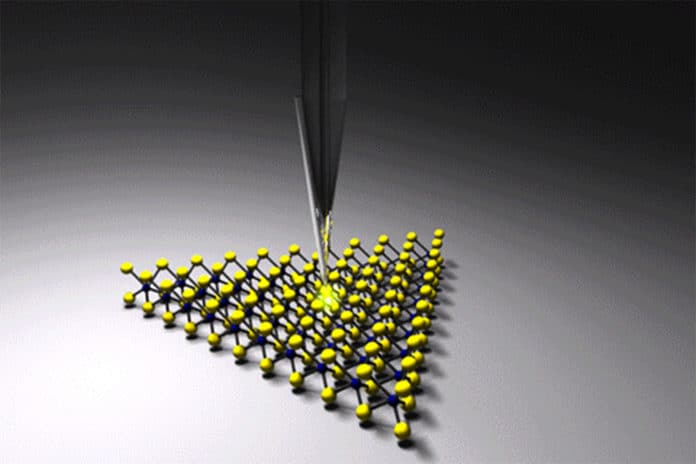Nanomaterials have applications in many different areas, especially in computing and electronics. But the materials are so tiny that they are not only indistinguishable when closely packed but also don’t reflect enough light to show fine details, such as colors, even with the aid of the most powerful microscopes. The inability to distinguish fine details and differences between individual pieces of nanomaterials makes it hard for scientists to study their unique properties and discover ways to perfect them for industrial use.
Researchers at UC Riverside have built a revolutionary imaging technology that compresses lamp light into a nanometer-sized spot. It holds that light at the end of a silver nanowire and uses it to reveal previously invisible details, including colors. Improving color-imaging resolution to an unprecedented 6-nanometer level will help scientists see nanomaterials in enough detail to make them more useful in electronics and other applications.
The team modified the existing tool (previously used to observe the vibration of molecular bonds) to measure signals spanning the whole visible wavelength range, which can be used to render the color and depict the electronic band structures of the object instead of only molecule vibrations. This unique tool squeezes the light from a tungsten lamp into a silver nanowire with near-zero scattering or reflection, where light is carried by the oscillation wave of free electrons at the silver surface.
The condensed light leaves the silver nanowire tip, which has a radius of just nanometers, in a flashlight-like conical path. When the nanowire’s tip passes over an object, the system detects and records its influence on the beam shape and color.
“It is like using your thumb to control the water spray from a hose,” said Ming Liu, associate professor in UC Riverside’s Marlan. “You know how to get the desired spraying pattern by changing the thumb position, and likewise, in the experiment, we read the light pattern to retrieve the details of the object blocking the five nm-sized light nozzles.”
The light is then focused into a spectrometer, where it forms a tiny ring shape. The researchers can formulate the absorption and scattering images with colors by scanning the probe over an area and recording two spectra for each pixel.
The team expects the new nano-imaging technology can be an important tool to help the semiconductor industry make uniform nanomaterials with consistent properties for use in electronic devices. The new full-color nano-imaging technique could also be used to improve understanding of catalysis, quantum optics, and nanoelectronics.
